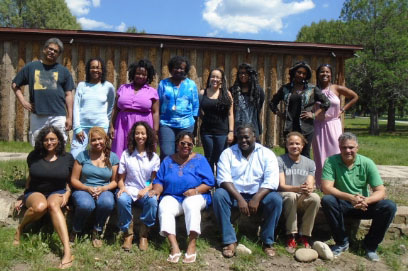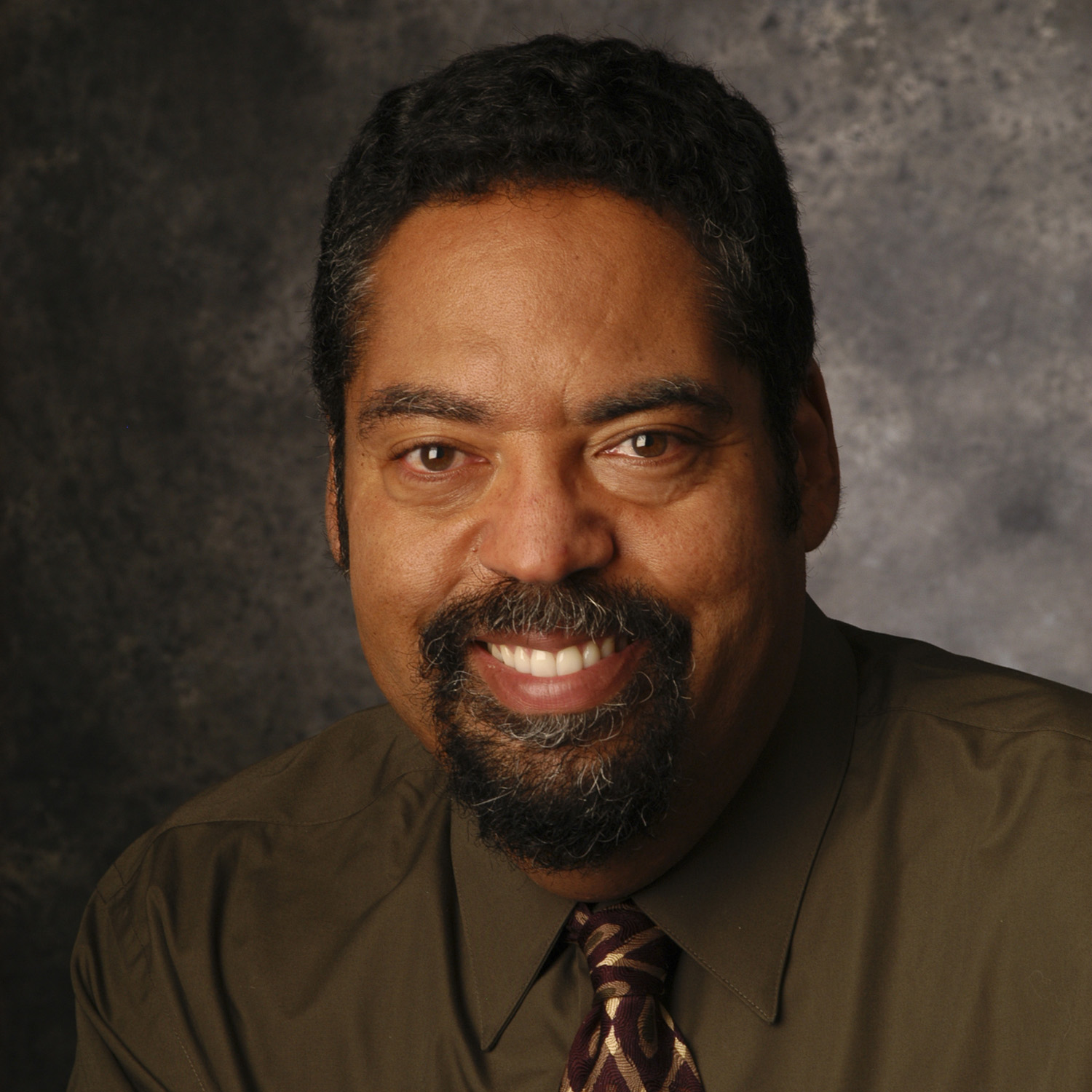Kimbilio Retreat attracts prominent African American fiction writers to scenic Taos for workshop, writing activities
David Haynes of SMU is hosting the annual Kimbilio Retreat, a conference of some of the nation’s leading African American fiction authors, at the remote SMU-in-Taos campus July 19-25, 2015.
TAOS (SMU) – SMU Creative Writing Director David Haynes knows that to do your best work, sometimes you’ve got to get away from life’s hustle-bustle.
 Faculty and fellows at the 2014 Kimbilio Retreat |
Luckily, his employer has just the place.
Haynes is hosting the annual Kimbilio Retreat, a conference of some of the nation’s leading African American fiction authors, at the remote SMU-in-Taos campus July 19-25.
“Taos is an enormously magical place,” says Haynes, noting the campus is in the middle of the Carson National Forest, surrounded by cedar trees and flanked by a mountain. “The majority of our 19 fellows are very busy professionals, so this is the ideal opportunity to just get away and focus on writing.”
A range of well-published and up-and-coming authors are attending the retreat, born several years ago of the need for a stronger national writing community.
Already, past fellows are seeing the fruits of their Kimbilio experiences. Several books work-shopped at the inaugural 2013 retreat will be published over the course of the year ahead.
“Almost all the writers who attend are at critical points with manuscripts,” says Haynes. “Many have an immediate goal of polishing or finishing a work and having a really good rigorous conversation.
“There’s something really powerful about being in a community with your peers for a week,” he adds
 David Haynes |
Q&A with Haynes:
Who is attending?
“We have 11 new fellows, six of them returning from the first year (2013) and two from last year. They can come back up to three times over a five-year period, so it’s a combination of returning and new fellows — the term we use for participating writers. There will be a total of 19 fellows, our undergraduate intern, four faculty members (including myself) and one staff member, who is a volunteer staff person who works with us. She manages all the logistics. I’m the only SMU faculty. We have a wider net of other faculty. One is Jeffery Renard Allen, a really well-published writer, who has won several major national awards within the last year. He has a novel called Song of the Shank, which has gotten lot of attention. Dolen Perkins-Valdez just published her second novel, Balm, which has been very well received. Our third is the writer Angela Flournoy, a recent Iowa Grad, who just published her first novel. It’s a really well-published group.”
What is the origin of the retreat?
“The origin was a strong yearning in the national writing community for a similar program to Cave Canem, a poetry retreat that has been enormously influential on American poetry, changing its face over the past 20 years. If you look at major poetry prizes, or literature in general, the ranks of those prizes are filled with Cave Canem alumni and faculty, including people who’ve won the Pulitzer and a recent Poet Laureate. There hasn’t been a fictional analogue for that, so there was a strong need and desire for it to happen. While discussing with my English department colleagues how we could outreach into the writing community, this was my suggestion, and everyone has been enormously enthusiastic about it. Local writer Sanderia Smith helped lay the groundwork and we finally got it up off the ground three years ago.”
How influential is the retreat?
“It’s an enormously powerful week. Even though we’re only three years in, we’re beginning to see some transformation in our fellows’ lives. A main goal is to begin the development of a national community of writers that support each other throughout the year and support each other’s work.”
What Does SMU-in-Taos offer that makes it an ideal place to host a retreat?
“People who haven’t been there have no idea what a treasure it is. It’s peaceful, secluded and away from the distractions of city life or even campus life. That really does help form a community. After a couple of days up there in the quiet, folks find themselves connected to each other.”
Is it valuable to writers to get away to write?
“Absolutely. One of the things we try to do is we have a workshop session in the morning where folks have discussions about their manuscripts. The manuscripts went out to the workshops a month ago, so folks are ready to discuss them. Then we have a short class in the afternoon, but what we really try to build into the day is at least 4-5 hours that are set aside just so people can write. The majority of our 19 fellows are very busy professionals, so this is the ideal opportunity to just get away and focus on writing, maybe even more than they get to when they sit at a desk and focus. Sometimes you just need to sit and think and SMU-in-Taos is ideal for doing that. You can walk around sit outside on the picnic benches. Throughout the campus are quiet areas that are designed to sit and meditate and sit and think and that’s valuable to go be quiet with your ideas.”
Describe the Taos campus to me.
“Northern New Mexico is mostly high desert surrounded by mountains and, depending what side the mountain is on, the higher up you are you go into a cedar forest. There’s a rocky craggy mountain a person could hike up if they so desired. The buildings and the campus itself, they’re all designed to fit into the landscape, so you don’t feel you’ve driven into a country club. The roads are unpaved and the living spaces are built in the New Mexico style with low adobe colored buildings. It’s lovely.”
What are the goals for the authors who attend?
“For the majority of writers who have come and become fellows, their ultimate goal is to become part of this national community we’re forming. That’s really important to a lot of people. We’re very rigorous in our selection process, so everyone is ready to sit around the table and have a high-level conversation about fiction craft. For a lot of the writers, writing can be very isolating, so in addition to being part of a movement of writers going forward, there’s something really powerful of being in a community with your peers for a week – folks who are very likeminded and share similar experiences and can relax and be comfortable with each other.”
###
SMU-in-Taos is located in the community of Ranchos de Taos, approximately 10 miles south of Taos, N.M., in the heart of the Carson National Forest at 6580 Highway 518. The Fort Burgwin campus has been an educational center of Southern Methodist University since 1973. A map and directions to the campus are available at www.smu.edu/AboutSMU/Maps/SMU-in-Taos. For more information call 575-758-8322.
21288-nr-7/17/15-kr